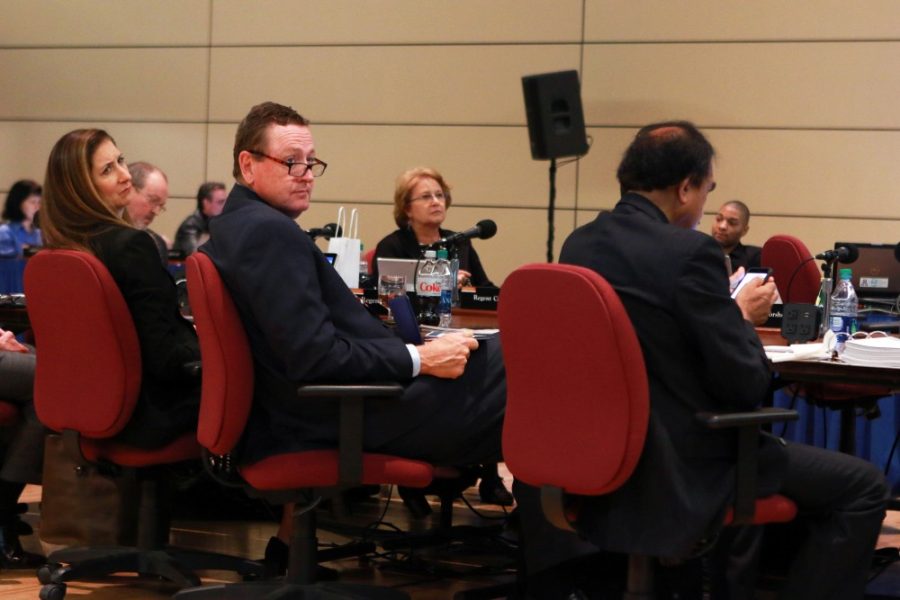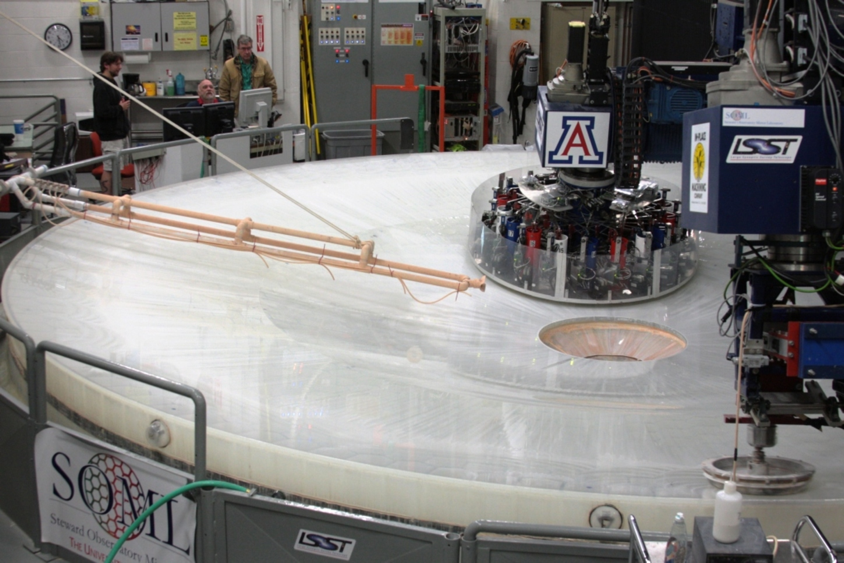The second day of the Arizona Board of Regents meeting focused on the future, the university’s financial issues and student issues.
Board Chair Greg Patterson opened the meeting saying the board’s goal is to “move the regents from what happened last quarter to what needs to happen in the future.”
Financial future
Gregg Goldman, senior vice president and CFO at the UA, outlined UA President Ann Weaver Hart’s hopes for her successor.
“When the new president arrives, President Hart has been very clear that she wants there to be resources available for them to do the things they want to do here to move the University forward,” Goldman said.
There’s some rollover money right now being saved for that reason.
RELATED: Top takeaways from Arizona Board of Regents meeting
Debt
Goldman said debt is important to think about for the university in future years. Currently, UA has $1.4 million of debt.
Of that amount, 71 percent is academic and research debt, and the other 29 percent is auxiliary debt, from housing, food and buildings.
“If the university was not to grow a bit, by 2025 we could be at $1 billion of debt,” Goldman said.
Yet Goldman said growth and more debt is necessary, so long as it’s responsible.
“If we don’t build research facilities, if we don’t maintain research facilities, we’re not going to be able to move forward,” Goldman said. “The university used to build a lot of things we did not have the money for. That changed under President Hart. I would never want to go back to where we were.”
Regent Rick Myers said any investment in research was fairly low-risk.
“If we build research facilities, we know they’re going to be filled with great research that will bring in more funding,” Myers said. “These aren’t risky bets.”
Deferred Maintenance
Goldman said there are many issues with building upkeep. He showed the board photos of the problems, which included crumbling concrete and water-stained tile.
In the 2005-2006 academic year, UA had $70 million in deferred maintenance. In the 2015-2016 academic year, there will be $313 million in deferred maintenance. By the 2025-2026 academic year, there will be an estimated $1 billion in deferred maintenance.
“Things are so old we’re buying parts from eBay to try to maintain what we currently have,” Goldman said. “What people see is only 23 percent of what the problem is.”
Of all the buildings, 3 million-square-feet are beyond their useful life, which is considered to be 60 years.
“Now, there’s no such thing as beyond useful life, but there needs to be updates,” Goldman said. “We have people in buildings that aren’t in the right conditions.”
The Forbes building, Steward Observatory, BioScience East building, the Mines and Metallurgy building and the College of Medicine-Tucson are the structures in worst repair on campus.
“We’re putting the health of students and faculty at risk,” Goldman said.
Student Engagement
Melissa Vito, vice president for student affairs and enrollment management, said engagement is her biggest focus moving forward.
“Two things drive me: How do we do amazing work for the students who are already here, but also, what about for those third and fourth graders right now who will be here in the future?” Vito said.
RELATED: UA Presidential Search Committee talks expectations for President Hart’s successor
The UA is the only school who will note on official transcripts that students graduated with engagement, which is vital according to Vito. She said employers they’ve polled think only 30 percent of total graduates are actually prepared, but the same employers find 92 percent of UA graduates are actually prepared.
“It’s a big attractor for students,” Vito said. “The engagement piece of our community is starting to be seen as something unique to UA.”
Student Regent Vianney Careaga is currently in one of the engagement programs and had only positive comments about the program.
“It adds a value to student education beyond a traditional classroom environment,” Careaga said. “It brings the idea that education should not be confined to the classroom itself.”
Online options
UA will launch an online science program, with an array of fully online students. As the UA is a worldwide university, this will bring more international students and more collaboration research, which benefits the university.
Follow Marissa Heffernan on Twitter.









